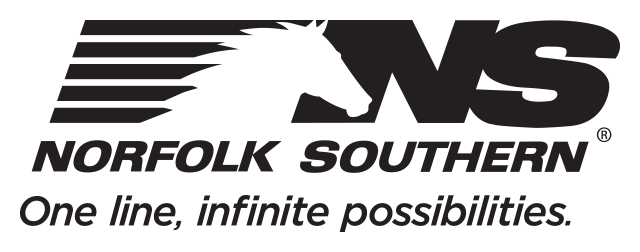A Battery-Powered Alternative: Part Two of a Two-Part Series
A Personal Quest to Improve the Planet
Gibson Barbee studied environmental engineering in college for the most idealistic reason: “I wanted to make the planet a better place,” he said. Barbee has since tempered his expectations of saving the planet. He is, however, working on making a difference.
Barbee, Norfolk Southern’s senior energy engineer, helped launch our research into battery technologies and has been involved in every stage of development of the NS 999 prototype battery-powered switcher locomotive.
“It’s consumed the last five years of my professional life – and a lot of nights and weekends. I know every curve on I-81 between Roanoke and Altoona,” he said, referring to the five-hour drive between his office in Roanoke, Va., and the Juniata Locomotive Shop in Altoona, Pa., where the NS 999 has been assembled and field-tested. “It’s been a real learning experience. I feel I have the best job on the railroad, getting to pursue locomotive energy storage and constantly defining and solving problems.”
When he joined Norfolk Southern in 1994, Barbee handled compliance issues for operating facilities that required state and federal air-emissions permits. After the U.S. Environmental Protection Agency adopted rules regulating locomotive emissions a few years later, Barbee worked with the company’s Mechanical Department on the most efficient and effective ways to meet the standards. He was manager of continuous improvement in the Research & Tests Department when approached about working on NS 999.
“That was really exciting to me,” Barbee said. “You think about trains as the most efficient mode of surface transportation, and if we are effective in developing locomotive energy storage, we have an opportunity to further improve our efficiency and to provide cleaner air, especially in urban areas. This is all about emissions and emissions savings.”
The NS 999 generates zero emissions when running, giving it many advantages, including elimination of criteria pollutants such as ultrafine particulate matter and nitrous oxide emitted by conventional locomotives.
While Barbee knows a lot about emissions, he had little technical knowledge of battery technologies when he started on the project. Now, his office bookcase is stuffed with titles such as “Alternate Energy Systems,” “Electric Machines,” and “The Handbook of Batteries.” Because Norfolk Southern was treading new territory for the rail industry, very little was published on battery-powered locomotives. Now, Barbee could write a book about the challenges involved.
He has spent much of the past five years trying to perfect the use of long strings of batteries and of battery management systems, and figuring out how to capture, store, and reuse the energy released by locomotive traction motors during dynamic braking.
“I would say that we underestimated the difficulties involved,” Barbee said. “We felt we could do it in a couple of years, and we were overly optimistic.”
Based on lab tests of more advanced batteries and an upgraded battery management system, Barbee is confident that NS 999 2.0 will perform as expected during anticipated field trials in 2014. Whether or not it will lead to an affordable alternative to diesel-powered switchers is another question.
Click here to read part one of this series
Barbee has become philosophical about the ultimate outcome of his efforts, recognizing that Norfolk Southern might not revolutionize rail transportation as he once envisioned. He believes the groundbreaking work he’s involved in will help define whether locomotive energy-storage systems are economical and at what cost point they could compete with diesel fuel. The research has been supported by the Federal Railroad Administration and the U.S. Department of Energy, he added.
“All of the work we’ve done is necessary to develop an economically feasible hybrid locomotive,” Barbee said. “This research is a long-term effort. It is one of the many applications on Norfolk Southern that will help us achieve our sustainability goals.”



